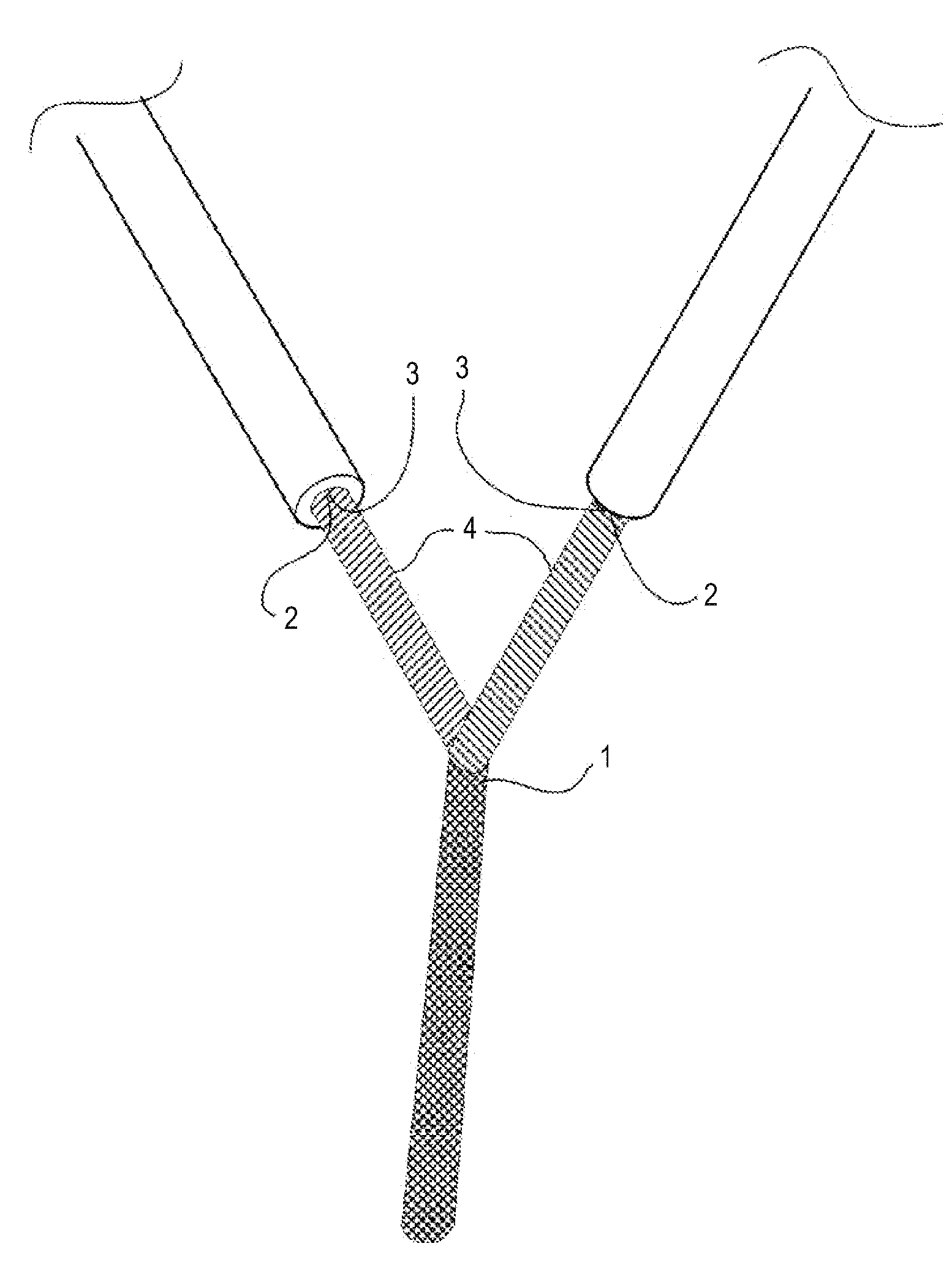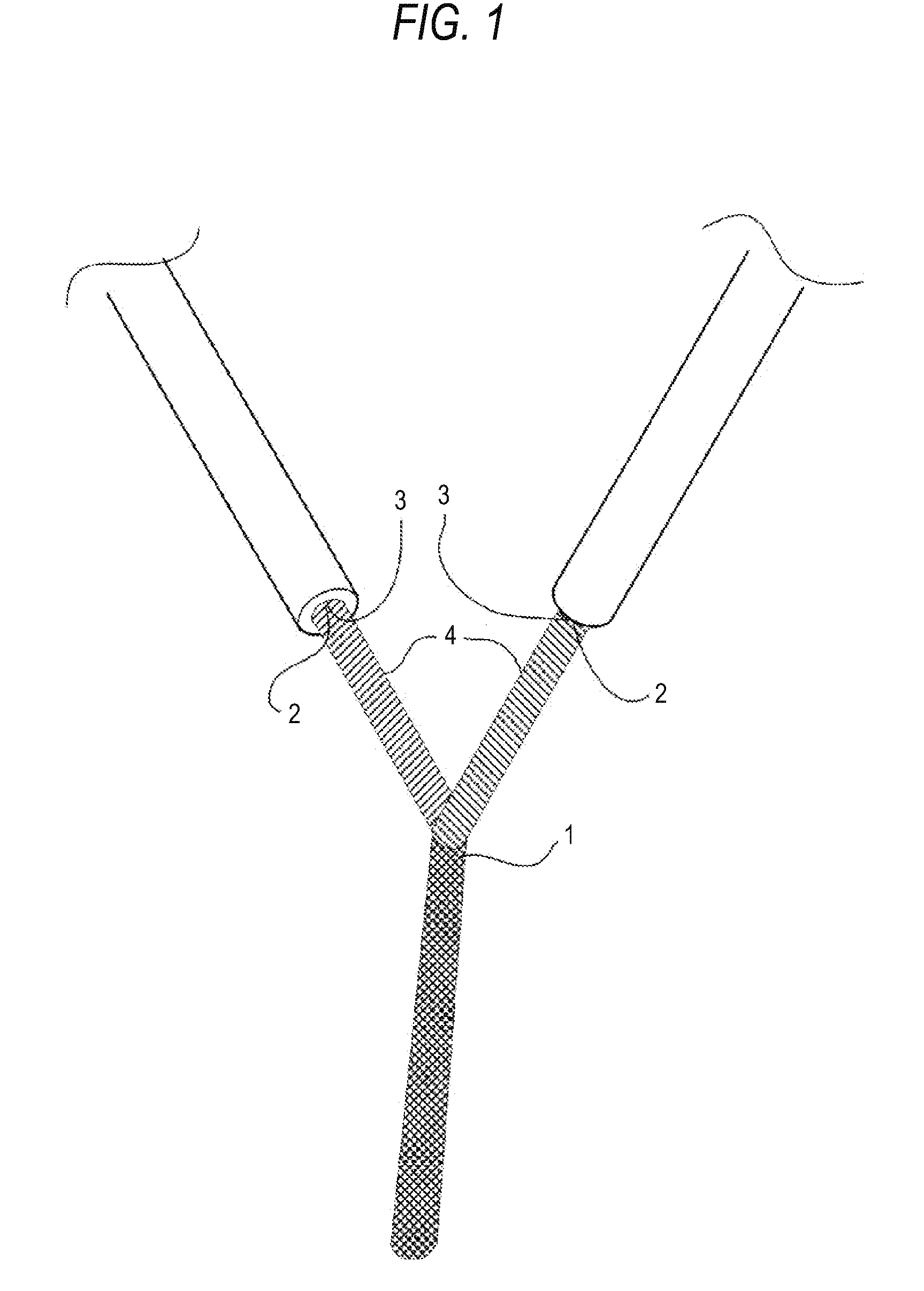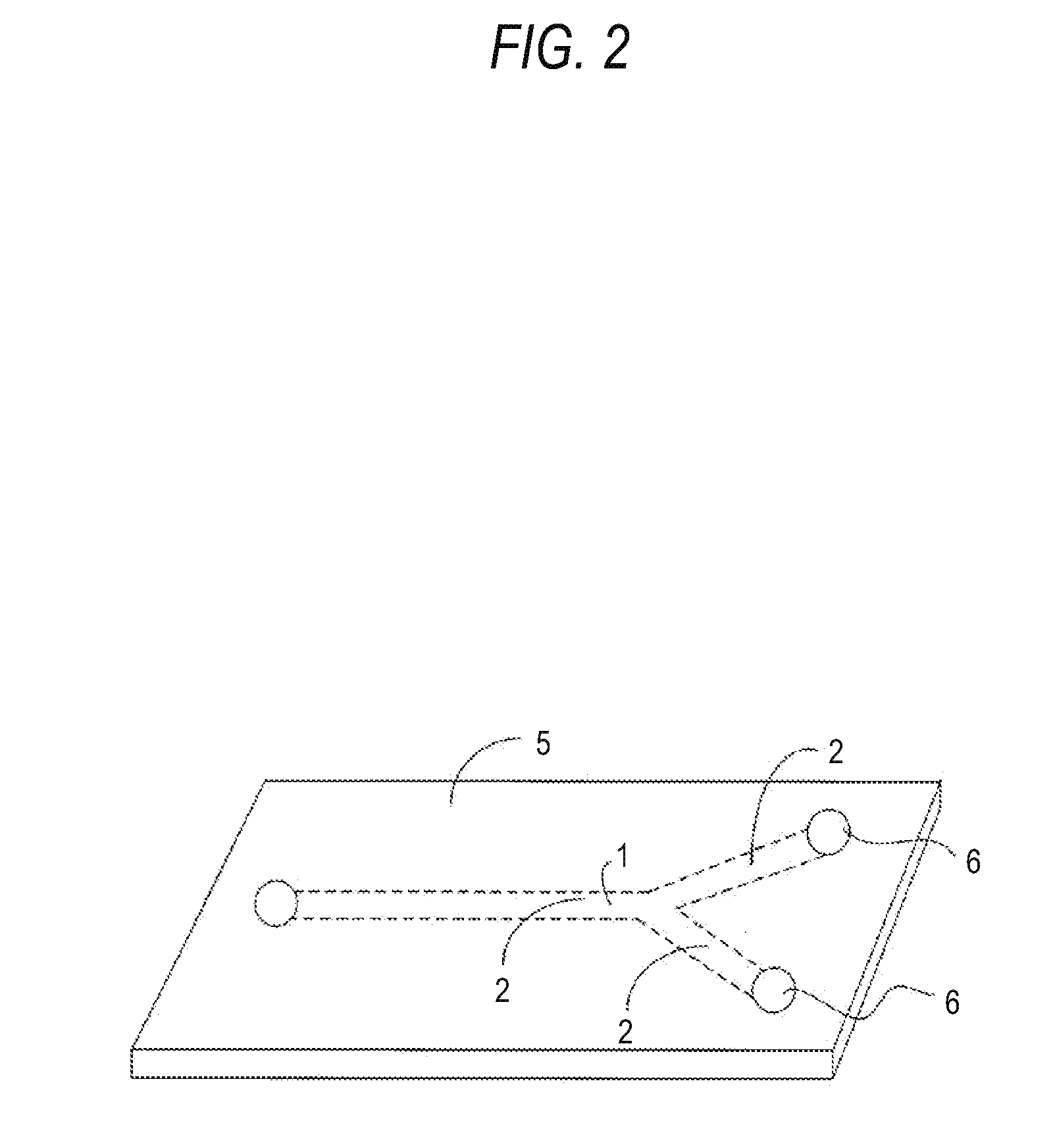Method for manufacturing pigment dispersion
- Summary
- Abstract
- Description
- Claims
- Application Information
AI Technical Summary
Benefits of technology
Problems solved by technology
Method used
Image
Examples
example 1
[0128]In the present example, 2,9-dimethylquinacridone is used as a pigment. A total of 10 parts by weight of 2,9-dimethylquinacridone is placed in a pear-shaped flask with a capacity of 300 mL, and 80 parts by weight of methanesulfonic acid is added thereto under normal temperature. The pear-shaped flask is immersed in oil bath heated to 80° C., and heating and stirring are performed for 10 min under an argon gas atmosphere. The 2,9-dimethylquinacridone is dissolved and a quinacridone pigment solution of a blue-violet color is prepared.
[0129]A solution obtained by dissolving 6.86 parts by weight of polyoxyethylene cetyl ether (C16H33(OCH2CH2)20OH) in 30 parts by weight of acetonitrile is added as a nonionic surfactant to 50 mL of the quinacridone pigment solution, and a solution in which the pigment is dissolved in an organic acid is prepared.
[0130]An aqueous solution of polyoxyethylene lauryl ether (C12H25(OCH2CH2)41OH) with a concentration of 1 wt. % is used as a reaction liquid....
example 2
[0144]In this example, unsubstituted quinacridone is used as a pigment.
[0145]A total of 10 parts by weight of the unsubstituted quinacridone is introduced in a pear-shaped flask with a capacity of 300 mL, and 60 parts by weight of methanesulfonic acid and 30 parts by weight of trifluoroacetic acid are added thereto at normal temperature.
[0146]The pear-shaped flask is immersed in oil bath heated to 45° C., and heating and stirring are performed for 10 min under an argon gas atmosphere. The unsubstituted quinacridone is dissolved and a quinacridone pigment solution of a blue-violet color is prepared.
[0147]A solution obtained by dissolving 6.86 parts by weight of polyoxyethylene cetyl ether (C16H33(OCH2CH2)15OH) in 30 parts by weight of acetonitrile is added as a nonionic surfactant to 50 mL of the quinacridone pigment solution, and a solution in which the pigment is dissolved in an organic acid is prepared.
[0148]An aqueous solution of polyoxyethylene lauryl ether (C12H25(OCH2CH2)41OH)...
example 3
[0155]In this example, 2,9-dimethylquinacridone is used as a pigment.
[0156]A total of 10 parts by weight of the 2,9-dimethylquinacridone is introduced in a pear-shaped flask with a capacity of 100 mL, and 80 parts by weight of methanesulfonic acid is added thereto at normal temperature.
[0157]The pear-shaped flask is immersed in oil bath heated to 80° C., and heating and stirring are performed for 10 min under an argon gas atmosphere. The 2,9-dimethylquinacridone is dissolved and a quinacridone pigment solution of a blue-violet color is prepared.
[0158]A solution obtained by dissolving 6.86 parts by weight of polyoxyethylene cetyl ether (C16H33(OCH2CH2)25OH) in 25 parts by weight of acetonitrile and 5 parts by weight of acetic acid is added as a nonionic surfactant to 50 mL of the quinacridone pigment solution, and a solution in which the pigment is dissolved in an organic acid is prepared.
[0159]An aqueous solution of polyoxyethylene lauryl ether (C12H25(OCH2CH2)41OH) with a concentra...
PUM
| Property | Measurement | Unit |
|---|---|---|
| Width | aaaaa | aaaaa |
| Width | aaaaa | aaaaa |
| Dispersion potential | aaaaa | aaaaa |
Abstract
Description
Claims
Application Information
 Login to View More
Login to View More - R&D
- Intellectual Property
- Life Sciences
- Materials
- Tech Scout
- Unparalleled Data Quality
- Higher Quality Content
- 60% Fewer Hallucinations
Browse by: Latest US Patents, China's latest patents, Technical Efficacy Thesaurus, Application Domain, Technology Topic, Popular Technical Reports.
© 2025 PatSnap. All rights reserved.Legal|Privacy policy|Modern Slavery Act Transparency Statement|Sitemap|About US| Contact US: help@patsnap.com



